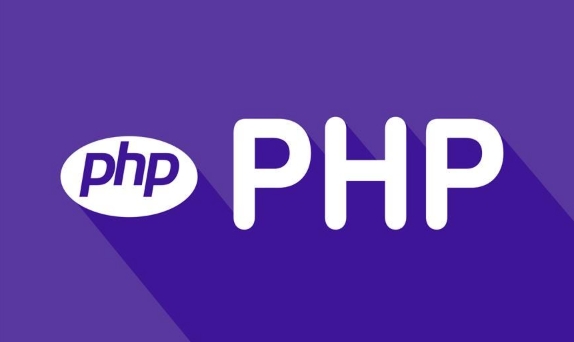The methods to run scripts using the PHP CLI include: 1. Make sure that PHP is installed and environment variables are configured, and run php script.php to execute scripts; 2. You need to manually add PHP path to environment variables on Windows, and Ubuntu and other systems can install php-cli packages; 3. Common parameters such as -a (interactive mode), -r (execution code), -l (synchronization check), and -S (start the server); 4. Get command line parameters through $argc and $argv, or use getopt() to handle complex options; 5. Actual applications include timing tasks, data import and export, command line tool development and unit testing. After mastering these basic operations, PHP CLI can become an efficient and practical development aid.

Using PHP CLI (command line interface) is actually not difficult, especially when you are already familiar with PHP's web development, it is more like a "change-run" PHP. CLI is mainly used for executing scripts, debugging code, timing tasks, automated deployment and other scenarios, and does not need to rely on browsers or HTTP requests.

How to run a PHP script?
The most basic usage is to run the .php file through the command line. For example:
php script.php
The premise is that your system has PHP installed and the php command is available in environment variables. If it is not configured properly, you can first run which php or php -v to confirm whether the installation is successful.

- If you are developing on Windows, you may need to manually add the PHP path to the system environment variables.
- Some servers (such as Ubuntu) only install Apache module by default and do not have CLI extensions, so they need to be reinstalled with
sudo apt install php-cli.
What are the commonly used parameters under CLI?
The PHP CLI provides some common parameters to control how scripts run. Here are some more common ones:
-
-a: Enter interactive mode, suitable for temporary testing of some small functions. -
-r: Run a piece of PHP code directly, such as:php -r "echo 'Hello World';"
-
-l: Syntax checking, it will not execute code, it will just help you see if there are any syntax errors:php -l script.php
-
-S: Start a simple built-in web server suitable for local testing:php -S localhost:8000
These parameters are very practical when debugging or writing tool scripts, especially -r and -l , which can quickly verify logic and syntax.

How to get the parameters passed in the command line?
The PHP CLI supports getting command line parameters through $argc and $argv .
For example:
php script.php foo bar --option=1
In the script you can handle it like this:
<?php
var_dump($argv);
// Output: array(3) { [0]=> string(10) "script.php" [1]=> string(3) "foo" [2]=> string(3) "bar" } Note that the first parameter is always the script name itself, and the following is what is passed in by the user. If you want to support more complex parameter parsing (such as parameters with options), you can use the getopt() function:
$options = getopt("f:v::", ["file:", "verbose::"]); This allows you to identify parameter formats such as --file=filename or -f filename .
Examples of practical application scenarios
- Timed tasks : In conjunction with Linux crontab, regularly clean logs and backup data.
- Data import and export script : For example, importing a database from CSV is faster and more stable than web forms.
- Command line tool development : For example, Laravel's Artisan command and Composer are also based on the PHP CLI.
- Unit testing : Many testing frameworks (such as PHPUnit) are run through the command line.
This type of script usually does not need to consider page rendering, and the logic is more focused and more efficient.
Basically that's it. After mastering the basic usage, you will find that PHP CLI is a very practical helper. Although it looks simple, many advanced features cannot be separated from it.
The above is the detailed content of How to use the PHP CLI (Command Line Interface)?. For more information, please follow other related articles on the PHP Chinese website!

Hot AI Tools

Undress AI Tool
Undress images for free

Undresser.AI Undress
AI-powered app for creating realistic nude photos

AI Clothes Remover
Online AI tool for removing clothes from photos.

Clothoff.io
AI clothes remover

Video Face Swap
Swap faces in any video effortlessly with our completely free AI face swap tool!

Hot Article

Hot Tools

Notepad++7.3.1
Easy-to-use and free code editor

SublimeText3 Chinese version
Chinese version, very easy to use

Zend Studio 13.0.1
Powerful PHP integrated development environment

Dreamweaver CS6
Visual web development tools

SublimeText3 Mac version
God-level code editing software (SublimeText3)

Hot Topics
 What are some best practices for versioning a PHP-based API?
Jun 14, 2025 am 12:27 AM
What are some best practices for versioning a PHP-based API?
Jun 14, 2025 am 12:27 AM
ToversionaPHP-basedAPIeffectively,useURL-basedversioningforclarityandeaseofrouting,separateversionedcodetoavoidconflicts,deprecateoldversionswithclearcommunication,andconsidercustomheadersonlywhennecessary.StartbyplacingtheversionintheURL(e.g.,/api/v
 How do I implement authentication and authorization in PHP?
Jun 20, 2025 am 01:03 AM
How do I implement authentication and authorization in PHP?
Jun 20, 2025 am 01:03 AM
TosecurelyhandleauthenticationandauthorizationinPHP,followthesesteps:1.Alwayshashpasswordswithpassword_hash()andverifyusingpassword_verify(),usepreparedstatementstopreventSQLinjection,andstoreuserdatain$_SESSIONafterlogin.2.Implementrole-basedaccessc
 What are weak references (WeakMap) in PHP, and when might they be useful?
Jun 14, 2025 am 12:25 AM
What are weak references (WeakMap) in PHP, and when might they be useful?
Jun 14, 2025 am 12:25 AM
PHPdoesnothaveabuilt-inWeakMapbutoffersWeakReferenceforsimilarfunctionality.1.WeakReferenceallowsholdingreferenceswithoutpreventinggarbagecollection.2.Itisusefulforcaching,eventlisteners,andmetadatawithoutaffectingobjectlifecycles.3.YoucansimulateaWe
 What are the differences between procedural and object-oriented programming paradigms in PHP?
Jun 14, 2025 am 12:25 AM
What are the differences between procedural and object-oriented programming paradigms in PHP?
Jun 14, 2025 am 12:25 AM
Proceduralandobject-orientedprogramming(OOP)inPHPdiffersignificantlyinstructure,reusability,anddatahandling.1.Proceduralprogrammingusesfunctionsorganizedsequentially,suitableforsmallscripts.2.OOPorganizescodeintoclassesandobjects,modelingreal-worlden
 How can you handle file uploads securely in PHP?
Jun 19, 2025 am 01:05 AM
How can you handle file uploads securely in PHP?
Jun 19, 2025 am 01:05 AM
To safely handle file uploads in PHP, the core is to verify file types, rename files, and restrict permissions. 1. Use finfo_file() to check the real MIME type, and only specific types such as image/jpeg are allowed; 2. Use uniqid() to generate random file names and store them in non-Web root directory; 3. Limit file size through php.ini and HTML forms, and set directory permissions to 0755; 4. Use ClamAV to scan malware to enhance security. These steps effectively prevent security vulnerabilities and ensure that the file upload process is safe and reliable.
 How can you interact with NoSQL databases (e.g., MongoDB, Redis) from PHP?
Jun 19, 2025 am 01:07 AM
How can you interact with NoSQL databases (e.g., MongoDB, Redis) from PHP?
Jun 19, 2025 am 01:07 AM
Yes, PHP can interact with NoSQL databases like MongoDB and Redis through specific extensions or libraries. First, use the MongoDBPHP driver (installed through PECL or Composer) to create client instances and operate databases and collections, supporting insertion, query, aggregation and other operations; second, use the Predis library or phpredis extension to connect to Redis, perform key-value settings and acquisitions, and recommend phpredis for high-performance scenarios, while Predis is convenient for rapid deployment; both are suitable for production environments and are well-documented.
 What are the differences between == (loose comparison) and === (strict comparison) in PHP?
Jun 19, 2025 am 01:07 AM
What are the differences between == (loose comparison) and === (strict comparison) in PHP?
Jun 19, 2025 am 01:07 AM
In PHP, the main difference between == and == is the strictness of type checking. ==Type conversion will be performed before comparison, for example, 5=="5" returns true, and ===Request that the value and type are the same before true will be returned, for example, 5==="5" returns false. In usage scenarios, === is more secure and should be used first, and == is only used when type conversion is required.
 How do I perform arithmetic operations in PHP ( , -, *, /, %)?
Jun 19, 2025 pm 05:13 PM
How do I perform arithmetic operations in PHP ( , -, *, /, %)?
Jun 19, 2025 pm 05:13 PM
The methods of using basic mathematical operations in PHP are as follows: 1. Addition signs support integers and floating-point numbers, and can also be used for variables. String numbers will be automatically converted but not recommended to dependencies; 2. Subtraction signs use - signs, variables are the same, and type conversion is also applicable; 3. Multiplication signs use * signs, which are suitable for numbers and similar strings; 4. Division uses / signs, which need to avoid dividing by zero, and note that the result may be floating-point numbers; 5. Taking the modulus signs can be used to judge odd and even numbers, and when processing negative numbers, the remainder signs are consistent with the dividend. The key to using these operators correctly is to ensure that the data types are clear and the boundary situation is handled well.






